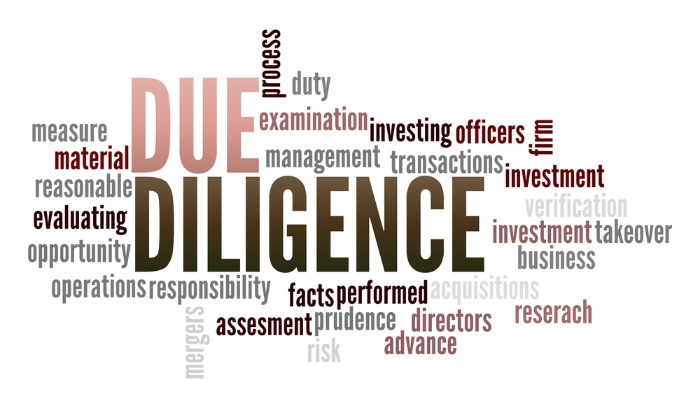In this blog post, Rohan Chawla, a student of Delhi University and pursuing a Diploma in Entrepreneurship Administration and Business Laws by NUJS, provides a brief overview on the importance of the preparation of a due diligence checklist.
Introduction
Buying a car is an exhausting process. The buyer can compare the car models endlessly. Is the car within the buyers’ budget? Does the car suit the needs of the buyer? Does the car meet the latest environmental standards? Which model of the car is best suited? Which financing option/financier should be selected?
There is no limit to these questions. If this is the effort that is put in to buy a car, imagine the extent and degree of questioning when it comes to buying/acquiring a business! The due diligence checklist was invented to provide for such a situation. The Due Diligence Checklist provides a rational framework through the use of which a reasoned decision can be made in transaction situations (such as merger, acquisition, IPO, restructuring, etc.).
Due Diligence is a detailed and thorough process of understanding the target (i.e.: the business to be acquired, merged, going public et al.). The aim of the due diligence is to obtain as much information about the target as can be acquired, merged, etc. The sources of information are both internal (asking documents from the target company), as well as external (i.e.: annual reports, press releases, broker reports, industry reports, etc.).
But how meaningful is it to conduct a due diligence? And if it is useful, then how does having a due diligence checklist help in any way?
Facets of the Checklist
Due diligence is of utmost importance in the transaction process. For instance, in the case of an acquisition, the target business will become a part of the acquirer and the acquirer will absorb all assets and liabilities of the target. The acquirer will be in a position to govern and control the business of the target. Thus, it is essential for the acquirer to develop an in-depth perceptive of the target. The acquirer must know what it is dealing with and if it is worthwhile to make an acquisition.
A checklist facilitates the process of due diligence. A transaction situation involves a plethora of considerations and requires assessment of various limbs of the targets business. Questions that must be answered include (but not limited to) – What is the valuation of the target business? How has been the historical performance of the target? What are the sectors of activity of the target and what are the synergies that can be achieved through the deal? What is the industry outlook of the target? Will the transaction violate any of the laws of the land? What were the business plans of the target before the transaction? What are the various licenses, intellectual properties, approvals and certifications that the target has received? What is the indebtedness and credit worthiness of the target business? Who are the major suppliers, customers, and distributors of the target?
Thus, the elements involved are not just financial but also qualitative and would require access to a wide variety of information. The checklist notes down the individual aspects (accounting policies, capital structure, financial performance, customer, and vendors, etc.) to be looked into and the different sub-steps to be taken up under those aspects. This allows the acquirer business to go meticulously over each aspect and ensure that every detail has been investigated. Greater the investigations, larger are the chances of success of the transaction.
For instance, under the Valuation aspect of the checklist, the following sub-aspects might be worth considering – What have been the returns of the company in the last five years? Have the returns exceeded the cost of capital? How has the company grown over the last five years (organically or inorganically)? Are there any accounting peculiarities on this company/industry?
Such analysis usually requires a large number of internal documents. In such cases, a list of required documents is appended to the checklist and handed over to the target. The target is expected to supply as much information as it can be based on that list.
The renowned finance professor Ashwath Damodran remarks that when it comes to valuation, there are two types of people – the numbers people (who focus on numbers while assessing a business and rely heavily on their excel model) and the others are the storytellers (who focus on the narrative or overall story of the business). He suggests a process to bridge the gap between numbers and narrative[1]_. Borrowing from that context, a due diligence checklist has a similar objective. It aims to consolidate the various facets of a deal so that a cohesive decision can be made. Once all the information is available (which the checklist ensures), it becomes easier to analyze the target and connect the dots.
The width of a due diligence compels the engagement of more than one person in the process. The checklist provides a ready mechanism for distribution of work among the due diligence team members. Thus, each aspect of the checklist can be delegated to a single individual, and that individual can be made responsible to source the information and analyze it thereon. Thus, the checklist ensures not only that all the work is done, but that the work is done efficiently and without duplication.
The checklist is also a tool to gauge progress. It defines the scope of the task at hand and allows the team members to check their progress in the exercise. It helps them identify the quick wins and the difficult areas of the due diligence; enabling them to take appropriate steps.
Each of the facets carries different weights, and the same factor may not carry the same weight in every deal. The checklist helps the acquirer assign the relative weights to each factor. Thus, personnel policy might be a significant factor in IT companies, where the employees are the major asset of the company. Similarly, employee benefit schemes might be an important factor in labor-intensive industries. Further, licenses may be an important factor in the telecom industry. Thus, the disclosures of the checklist provide a holistic picture of the target and may perhaps provide information which was otherwise unknown to the acquirer.
Conclusion
The due diligence checklist is of immense importance. It lays down the scope of work, enables the parties to track their progress, ensures that all work is done, provides a mechanism to distribute work and through all of this helps arrive at a reasoned decision for the transaction.
Nevertheless, like any framework, the checklist will also fail if flexibility is not allowed. Not all matters listed in the checklist will be achieved. Not all information will be available. In those cases, prioritization of issues should be kept in mind. In case, no information is available on a high priority issue; an effort should be made to gauge the same from the information available on the other issues. Thus, if direct client testimonials are not available, then the degree of repeat purchases might give information regarding product quality and service.
Indeed a checklist is indispensable in due diligence.
[divider]
References:
[1]Reliable Investment Valuations Balance Numbers and Narratives, Aswath Damodaran(https://blogs.cfainstitute.org/investor/2014/12/10/aswath-damodaran-the-most-reliable-investment-valuations-balance-numbers-and-narratives/)












